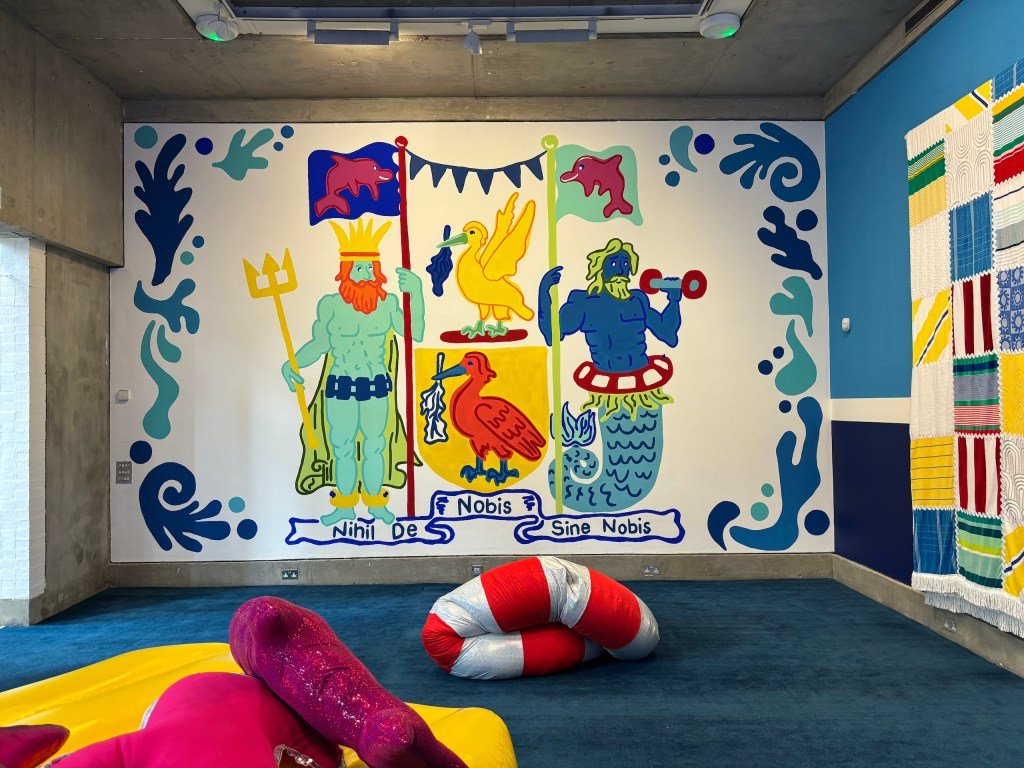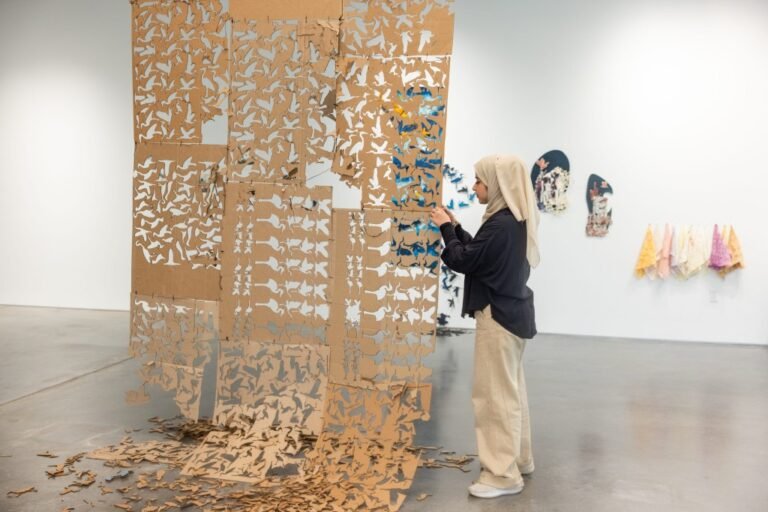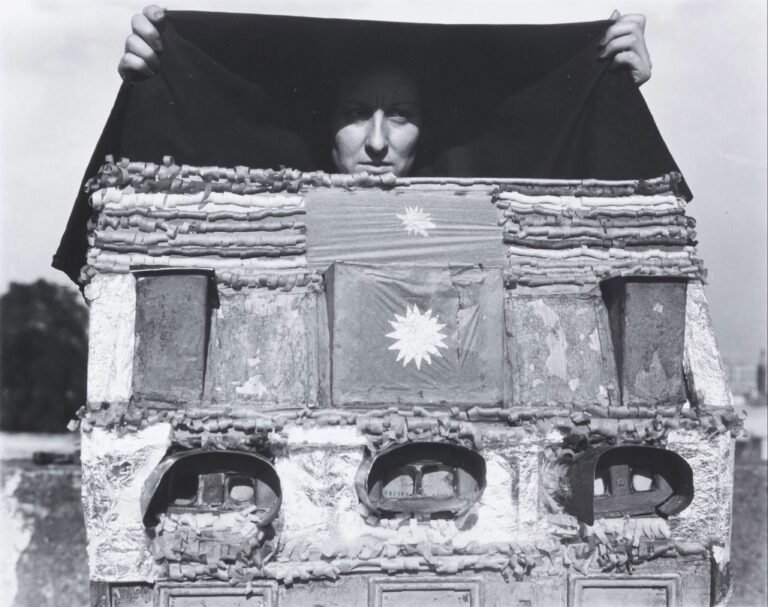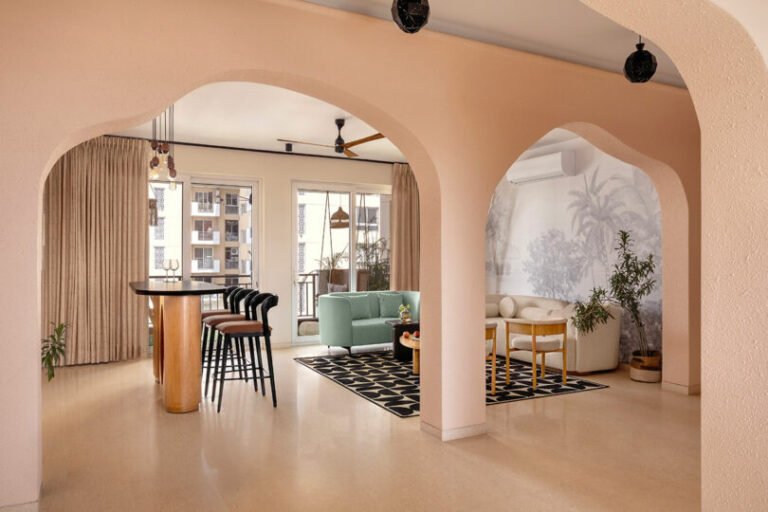

LIVERPOOL — Bedrock offers a multilayered theme for the 2025 Liverpool Biennial, the United Kingdom’s largest free contemporary art festival. Curator Marie-Anne McQuay notes in a catalog essay that it explores three overlapping strands: The city’s underlying sandstone foundations, which have also shaped its architecture; modern layers built during periods of industrialization, colonization, and the transatlantic slave trade; and, finally, the city’s diverse demographics and the places they cohabit today. The theme’s potency is, however, impaired by the presence of many underwhelming artworks, some of which feel weak in isolation while others come across as speculative responses to the theme.
For starters, the 30 participating artists are scattered across 14 venues and four outdoor installations, with many presenting more than one work. Despite Liverpool being a walkable city, the staging feels too fragmented. Tate Liverpool’s current closure for renovations has robbed the organizers of an anchoring venue. The site that comes closest is Bluecoat, where McQuay headed the programming from 2015 to 2022. Her familiarity with the space comes in handy as she cohesively presents a set of works that examine familial ties, identity, and heritage.

Incredibly, only one of the artists in the biennial has enduring ties to the city. Presented at Bluecoat, Liverpool-born Amber Akaunu’s documentary “Dear Othermother” (2025) shines through in its authenticity. It is a heartfelt examination of single motherhood, intergenerational bonds, and unconventional friendships in the Toxteth neighborhood. The film is deeply tied to the social fabric, given that this area historically harbored people of African and Caribbean ancestry, and one out of six households there today is headed by a single mother. A few other artists have also created meaningful participatory projects involving the local community. Through workshops, the Somali-Indian collaboration DARCH surfaces spiritual traditions around the death and grieving using soil as medium and metaphor. Dublin-based Alice Rekab’s vibrant vinyl murals “Bunchlann / Buncharriag” (2025), co-created with college students, explore assertions of immigrant identities among young people.
However, at many venues, the works fail to engender meaningful dialogue in congruence or contrast, despite the curatorial assertions. Take Turkish artist Cevdet Erek’s “Away Terrace (Us and Them)” (2025) at 20 Jordan Street — a sprawling but drab installation with pulsating sounds mimicking the in-stadia buzz of a football match. It is presented alongside Imayna Caceres’s assortment of handmade clay sculptures whose flora and fauna motifs commemorate pre-Columbian knowledge systems related to their Peruvian heritage. The curatorial suggestion that both artists explore “foundational references from the city including football stadia and naturally occurring materials” comes across as unconvincing.

At the Walker Art Gallery, the group exhibit is tucked away in a secluded cul-de-sac and fails to forcefully critique the museum’s colonial legacy. Next door, at the grand Liverpool Central Library, Eritrea-born Dawit L. Petros’s “As the Nile Flows or the Camel Walks” (2025) can also be hard to locate or viscerally engage with. His installation draws on colonial archives to reimagine a British-Canadian military expedition in the 1880s.
In contrast, searching for Kara Chin’s tiles set into the sidewalks on Berry Street is like an enjoyable easter egg hunt. Her multimedia installation at a nearby venue also scores for its playful use of urban fixtures like seagulls, parking meters, and non-native plants to make a broader point about adaptation and resilience.
The Biennial’s outreach in the city’s Chinatown, the oldest in Europe, is noteworthy for intent but fails to strike a deeper resonance. Montreal-based Karen Tam’s recreation of a Cantonese opera stage ponders how diasporic memory preserves histories vulnerable to erasure, but it feels more like a generic import than a conversation about Liverpudlian-Chinese immigrant experiences. Taiwanese artist ChihChung Chang’s Imperial Arch-shaped mural, “Keystone” (2025), did involve local residents in its making. What is missing is a penetrating examination of the discrimination that the community has suffered in the past, such as the forced repatriation of Chinese seamen after the Second World War, which tore apart mixed-race families and was not acknowledged properly until decades after.

One of the better-known British names on view is Turner Prize winner Elizabeth Price. Her film “Here We Are” (2025), which draws a correlation between waves of immigration in postwar Britain and the proliferation of Catholic modernist churches, works well as it spotlights a key aspect of how Irish immigration has given the city its distinct cultural ethos.
Crowds were surprisingly sparse when I visited key venues like the Open Eye Gallery and Tate’s pop-up space. In contrast, the Beatles statue at the nearby Pier Head and the Royal Albert Dock were teeming. While the city continues to bank on its shipping heritage, favorite foursome, and football to draw in more visitors, the biennial needs to figure out alternative ways to achieve relevance. Unearthing local creative voices, fostering more participatory gestures, and radically engaging with the city’s checkered past must continue to be part of the answer.




The 2025 Liverpool Biennial: Bedrock continues at multiple venues across Liverpool through September 14. The biennial was curated by Marie-Anne McQuay.


